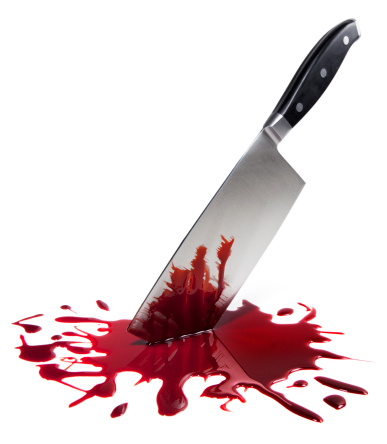
A knife is a valuable item for our everyday carry (EDC) endeavors.
From opening boxes, cans, preparing food, self-defense are just a few of the advantages of having a knife for your EDC.
However, this vital tool can be dangerous if not handled properly. Looking at statistics, I realized that knife-related injuries are much more common than you may think.
Research estimates a whooping 1,190 cases of emergency knife injuries across the United States every single day.
Below are some tips to help EDC enthusiasts prevent knife injuries while using your knife.
But first, let's look at the common reasons for knife-related injuries.
Visit our HOMEPAGE for more great content!
Most Common Causes of Knife-Related Injuries
The knives in our kitchens and those we carry in our bags or sometimes in our pockets may cause accidental cuts. Below are some common causes of knife injuries:
- Working with a blunt or dull blade.
- Inappropriately storing your knife, usually with the edge extended
- Using it to cut more than it can handle.
- Improperly holding the knife
- Using the knife for self-defense
Tips to Avoid Knife Injuries
Here are some helpful tips on how you can handle your knife and avoid injuries:
1. Use a Sharp Knife
When using a dull knife, you will need more pressure and effort to cut, resulting in injuries.
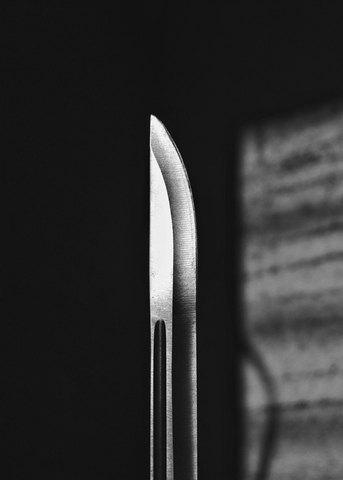
Therefore, to avoid injuries caused by a blunt or dull knife, always ensure that you use quality and sharp blade.
Regularly check your knife to determine its condition, especially before you put it to the task.
Regular checks will tell you if the EDC knife needs sharpening or if it has any damages that may compromise safety.
When checking, avoid using your fingers to determine how sharp the knife is.
The truth is, it can be too sharp! Instead, you can try checking your knife's sharpness by cutting something from your kitchen.
2. Always Face The Sharp Edges Away
It might be easy to think that the only time you're prone to injury is when holding the blade ready to cut, but that is usually not the case.
You should always be conscious of your whole body position relative to the knife position in preparation for any sudden occurrence.
For instance, if you hold the knife with the sharp edge facing you, imagine what will happen if you trip and fall or if someone bumps into you. You'll definitely injure yourself.
3. Know The Limits of Your Knife
One reason for knife accidents is using the knife to cut more than it can handle.
Do you know your knife's limits in terms of cutting and force? Not all blades are designed to cut rigid materials.
For instance, you cannot use a small EDC knife to cut off a piece of wood. You will hurt yourself or damage your knife.
Also, consider using an alternative EDC defensive tool instead of using your EDC knife as a weapon when faced with a more experienced adversary.
4. Store the Knife Safely
Storing the knife safely means that you do not leave the blade open. Fortunately, most kitchen and EDC knives will have a blade cover when buying them.
Some even come in knife holders to keep the blades out of sight when not in use.
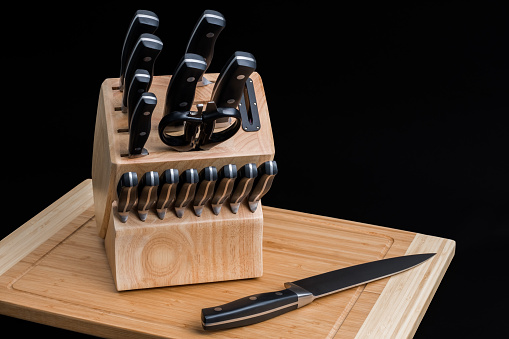
Storing it safely with its cover intact may reduce the number of times that you would get injured every time you put your hands on the bag.
5. Keep it Dry
You may underestimate the power of keeping your knife dry before storing it in your EDC bag or safety compartment.
There is a high chance that your knife will rust if you always leave it wet.
A rusted blade is very prone to breaking this making it more dangerous to you and those around you.
As you know, cuts by rusted objects often lead to infections.
An additional reason to keep your knife dry is that a wet can easily slip away from your hands while using it, increasing the potential of injury.
6. Use a Firm Cutting Surface
Cutting anything on an unstable surface is dangerous; one mistake and the knife will come landing on your hand.
If you are going to use your EDC knife to cut things on a chopping board or any other chopping surface, make sure you are cutting your material on a firmly secure surface.
7. Sharpen the Right Way
Appropriately sharpening your EDC knife and using the right pocket knife sharpener is the best way to avoid slip injuries while maintaining the quality of your knife.
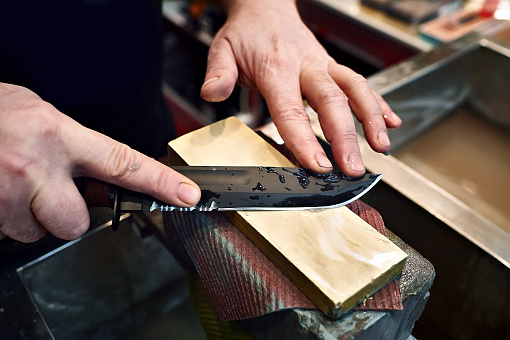
The sharpening angle is often selected based on the intended use. Ideally, thicker blades are ideal for cutting hard material, while thinner blades are ideal for thin slicing.
8. Avoid Knife Fights
Knife fights can lead to serious cuts and possible death. Whenever you decide to get into a knife fight, be sure that no one will get out unhurt. Always create distance between you and the enemy.
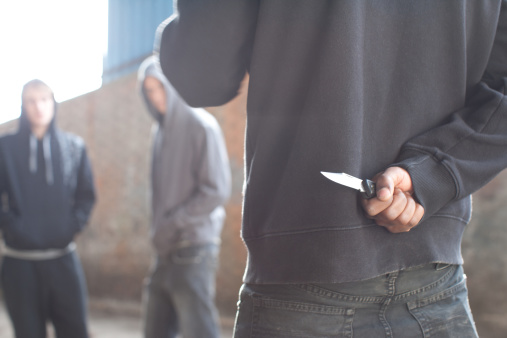
To avoid such injuries, you'd have to be good at using a knife for self-defense. Either way, you may not know the capability of your adversary.
To be safe, try to abandon the fight and find other ways of solving the conflict.
Bottom Line
While EDC tools are meant to help us make life easier, it's important to prioritize safety.
As an everyday carry enthusiast, your knife will serve you well if you know how to handle it in situations where you're prone to injury.
Thanks for visiting our site!
Checkout our BLOG for more great content!
Visit our EDC Flashlights Page for reviews and recommendations.
